Recent Articles
Popular Makes
Body Types
2017 Toyota Camry Hybrid XLE Road Test and Review
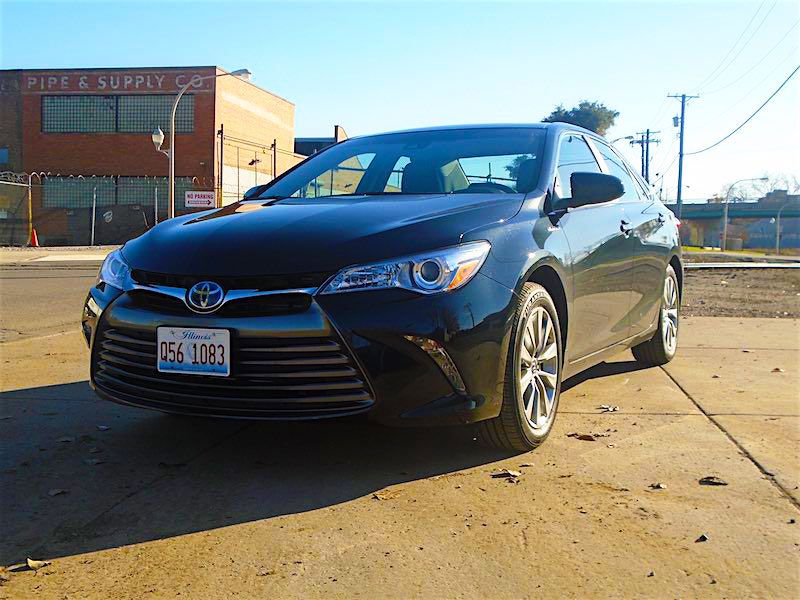
2017 Toyota Camry Hybrid XLE frontangle by Cherise LaPine ・ Photo by Cherise LaPine
The 2017 Toyota Camry Hybrid XLE is one of the more premium mid-range midsize hybrid sedans on the market—if you go much nicer (or much more expensive) than a fully loaded Camry Hybrid XLE, you might as well start cross-shopping with entry-level luxury cars. That said, it isn’t a particularly interesting car to drive or to look at, and Toyota seems to be fine with that—it’s what makes the regular Camry such a steady and reliable best-seller, after all. It’s just that anyone who looks at the Camry Hybrid XLE and expects anything more exciting than, well, a Camry, is likely to be disappointed.
The Camry Hybrid was fully redesigned in 2012 and was last refreshed in 2015. For the 2017 model year, Toyota keeps things mostly the same, except for some minor tinkering with the options list. Now, let’s take a look at the 2017 Toyota Camry Hybrid XLE.
Pricing
The base version of the Toyota Camry Hybrid, the LE, has a starting MSRP of $26,970. This is $3900 more than the base version of the regular Camry, and it’s also more expensive than the hybrid versions of many other midsize sedans—this list includes the Chevy Malibu Hybrid, Honda Accord Hybrid, Hyundai Sonata Hybrid, Kia Optima Hybrid, and Ford Fusion Hybrid. In short, it’s one of the most expensive models in the class, although it does include a fair (but not overly generous) list of standard equipment.
The Camry Hybrid SE costs $27,995, and includes suspension upgrades, leatherette interior, and trim-specific styling elements; it’s probably worth it for buyers who prefer firmer handling.
Our test car, the Camry Hybrid XLE, retails for $30,140. There are two available options packages (consisting of most of the vehicle’s available active safety equipment), which can add $1760 or $3735 to that price, pushing the Camry Hybrid XLE close to $34,000.
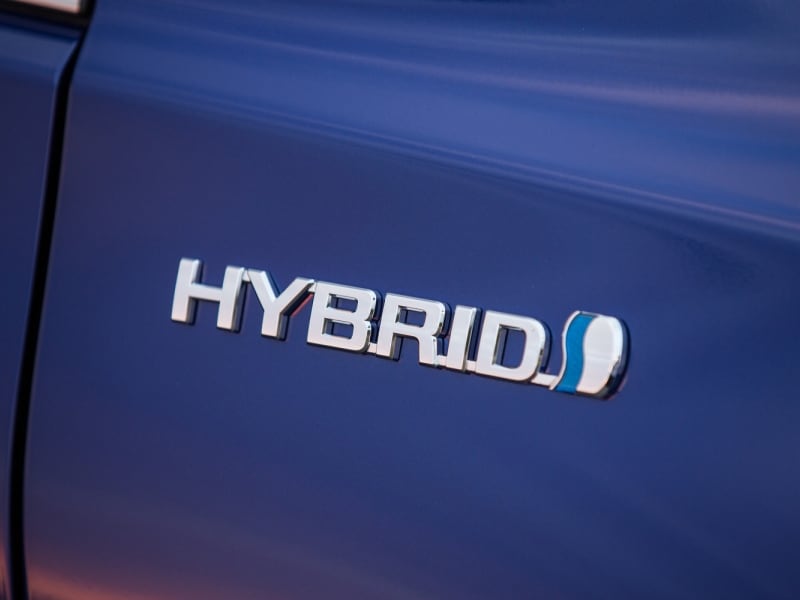
Photo by Toyota
Powertrains, Performance and Fuel Efficiency
The 2017 Toyota Camry Hybrid has one of the highest horsepower ratings of all the midsize hybrid vehicles on the market. The Camry Hybrid comes with a 2.5-liter 4-cylinder engine paired to an electric motor, generating a total 200 horsepower. This setup provides acceleration that’s surprisingly quick for a hybrid. When the car is capable of moving on the electric motor only, the gas engine will shut off, and an indicator light will illuminate in the dashboard. (This happens more often than we expected.) Sometimes the switch is noticeable and the car will give a shudder. The CVT gearbox is generally smooth, but it's a little noisy on the highway.
For a midsize sedan, the Camry Hybrid has good EPA ratings of 42 MPG city and 38 MPG highway, but those numbers fall a little short of other hybrids. Our mileage after a weekend of hard city driving came close to those estimates in Normal mode; we didn’t spend much time testing Eco mode.
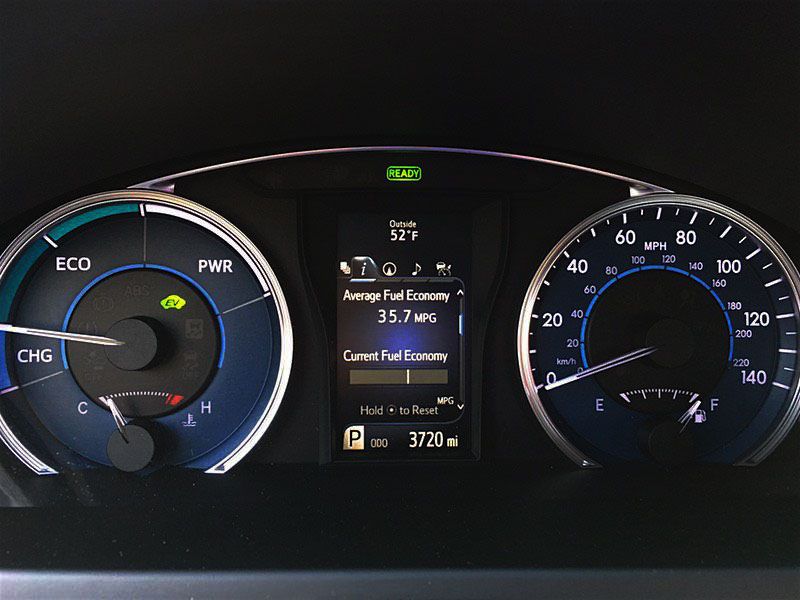
Photo by Cherise LaPine
Exterior Design and Lighting
Toyota calls the Camry Hybrid’s design “aggressive,” and while we’d respectfully disagree, it’s certainly not a bad-looking car. It’s sportier than the previous-generation Camry, thanks primarily to bolder creases along the body and a more angular grille, but this design has also been around for several years, so it’s not exactly new or surprising.
The Camry Hybrid XLE offers headlights and daytime running lights fitted with LEDs—these are better-looking and more efficient than other types of front lighting, and the light output is great. The auto headlight feature is a nice touch, too.
The Camry Hybrid XLE comes with 17-inch alloy wheels fitted with low-rolling-resistance tires (a pretty standard feature on hybrids that go as far as they can on every drop of fuel). The spoked wheel design was a nice complement to the car, and the wheels’ chrome finish matches the window surrounds.
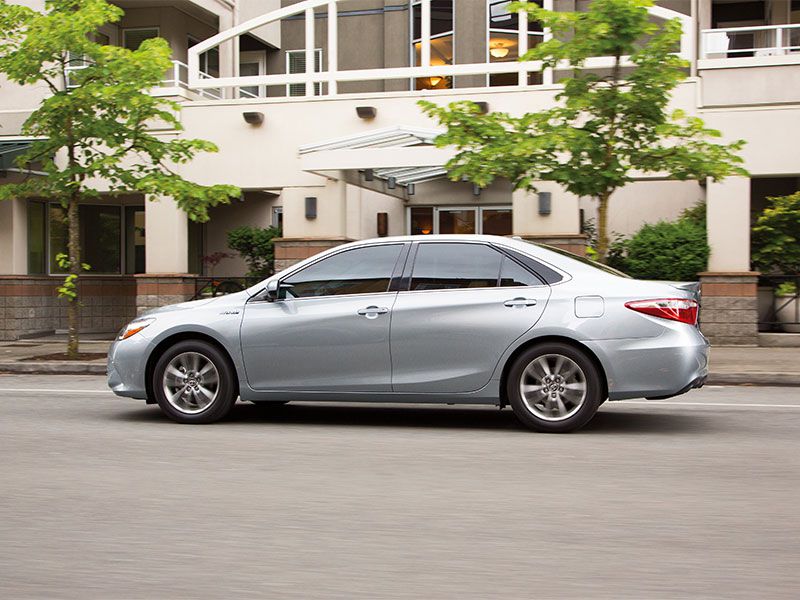
Photo by Toyota
Interior Design and Capacities
The Toyota Camry Hybrid XLE’s interior is wicked comfortable and useful. Our test car was equipped with a black leather interior that featured heated front seats and a power driver’s seat. Both rows offer plenty of room (so much, in fact, that buyers who are considering the larger Avalon Hybrid could potentially cross-shop it against the Camry Hybrid and save some cash). The dash layout was easy to navigate, there were handy cubbies everywhere, and the wireless phone charging pad would have come in super handy if our phone had that technology.
At 13.1 cubic feet, the Camry Hybrid’s trunk is a couple cubic feet smaller than the regular Camry's, because the hybrid powertrain’s battery pack takes up some of that volume. This is common for a hybrid sedan, and the Camry Hybrid’s cargo capacity is on par with that of its hybrid competitors.
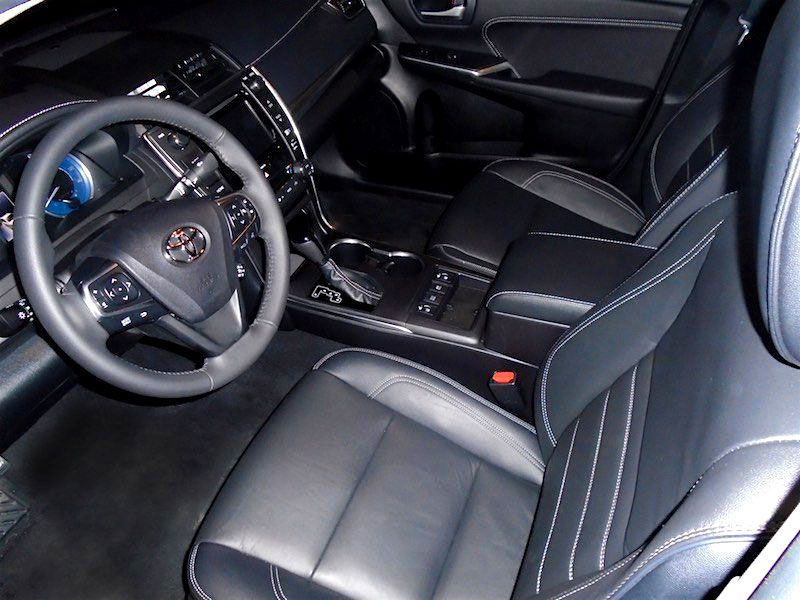
Photo by Cherise LaPine
Audio and Infotainment
While the base LE and mid-range SE 2017 Toyota Camry Hybrid come with a 6.1-inch touchscreen infotainment system, the XLE gets an upgrade to a 7-inch touchscreen display. This system is designed to control most of the vehicle’s functions, but Toyota also includes actual knobs for audio and climate controls, which is nice (and almost certainly intended for older buyers, who would rather not search through computer menus to simply adjust the volume). Controls on the steering wheel work the audio system and information readouts in the the dashboard display.
The Camry Hybrid XLE comes standard with a 10-speaker JBL audio system, navigation, HD radio and satellite radio, the Entune App Suite (which requires connection to a smartphone), and Bluetooth wireless integration. The system is easy to use after just a few minutes of tinkering.
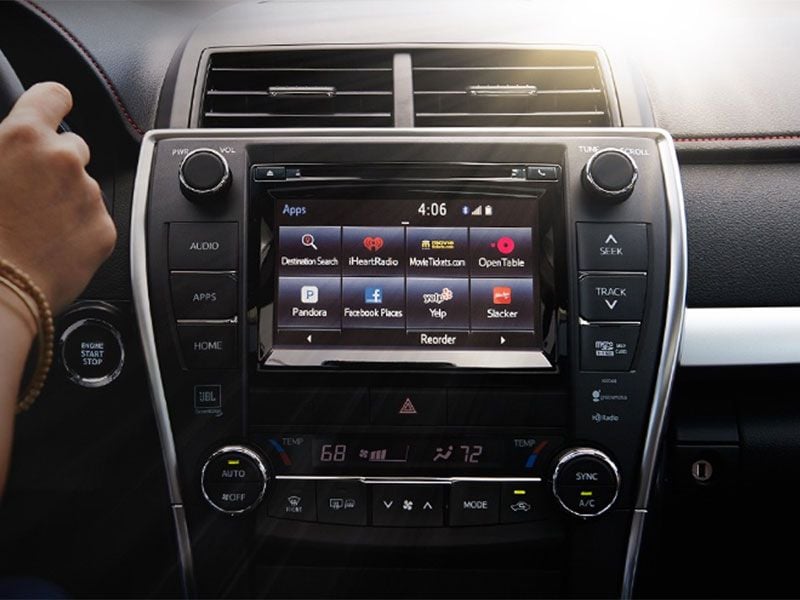
Photo by Toyota
Available Equipment
Although the XLE is the Camry Hybrid’s top trim level, it requires at least $3735 in options to be considered fully loaded. The Camry Hybrid XLE includes most desirable features, including a leather interior (in the choice of three colors), heated and power-adjustable front seats, dual-zone automatic climate control, push-button start, a proximity key, a USB port, and a rearview camera.
Two options packages can be added to the XLE; the more expensive of the two includes the options in the less-expensive package, plus extras. That package, installed on our test car, consists of a power moonroof, adaptive cruise control, the Toyota Safety Connect telematics system (which automatically notifies emergency responders in the case of a collision), and most of the Camry Hybrid’s available active safety features—blind-spot monitoring, rear cross-traffic alert, forward collision warning, and lane-departure warning.
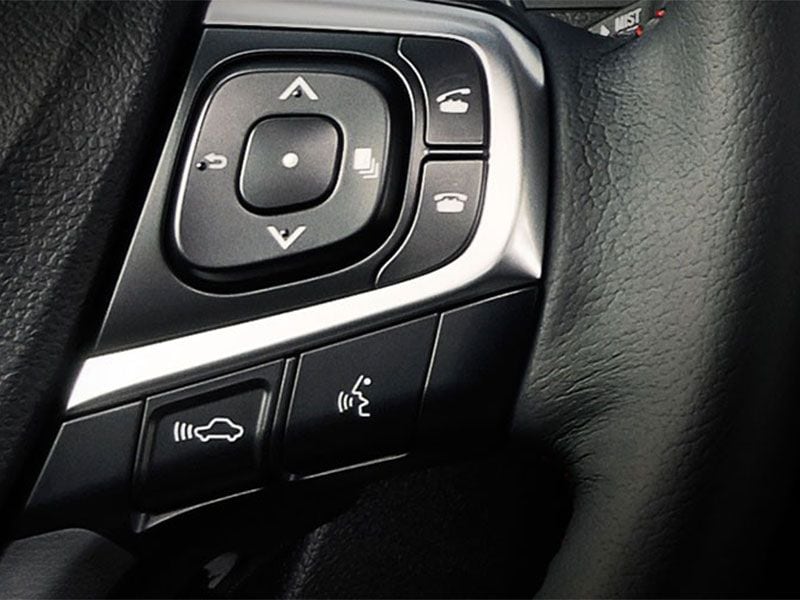
Photo by Toyota
Safety Ratings and Technology
The 2017 Toyota Camry Hybrid has not yet been evaluated by the Insurance Institute for Highway Safety, but it’s been subjected to the National Highway Traffic Safety Administration’s crash testing regimen. It came through those tests with a mix of 4- and 5-star results, earning the organization’s coveted 5-Star Overall rating.
A rearview camera is the only advanced safety feature that comes standard on the 2017 Camry Hybrid (and it’s pretty much considered a necessity in this class these days), but a full suite of high-tech equipment is available. Toyota offers adaptive cruise control, blind-spot monitoring, forward collision warning, lane-departure alert, rear cross-traffic alert, and the Toyota Safety Connect telematics system as options. However, this requires going all the way up to the top XLE trim level and adding a $3735 equipment package. It’s worth noting that some competitors offer similar equipment on lower, less expensive trim levels.
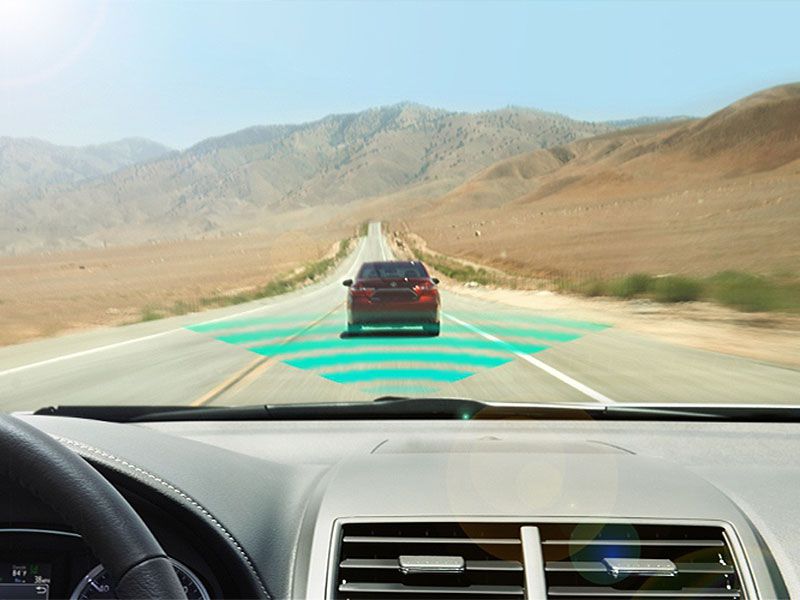
Photo by Toyota
Other Cool Features
There’s not much to report here—the “coolest feature” of the Camry Hybrid driven for this review was its paint color. This exterior finish is called Parisian Night Pearl (and so happens to be the most memorable aspect of the 2017 Toyota Avalon Hybrid we reviewed a few months ago). This sophisticated dark blue has a lot of subtle shimmer hidden within, adding a surprise element of visual interest. (That said, it’s extremely hard to photograph on a sunny day.)
Otherwise, there’s nothing at all surprising or “cool” about the Camry Hybrid XLE, and honestly, that’s exactly the point. The Camry’s always been a car for people who don’t want anything unexpected, and that’s why auto manufacturers like Toyota adapt so many of their regular cars into hybrids. The 2017 Camry Hybrid is designed to provide the same steady, reliable, day-to-day experience, and it does it well.
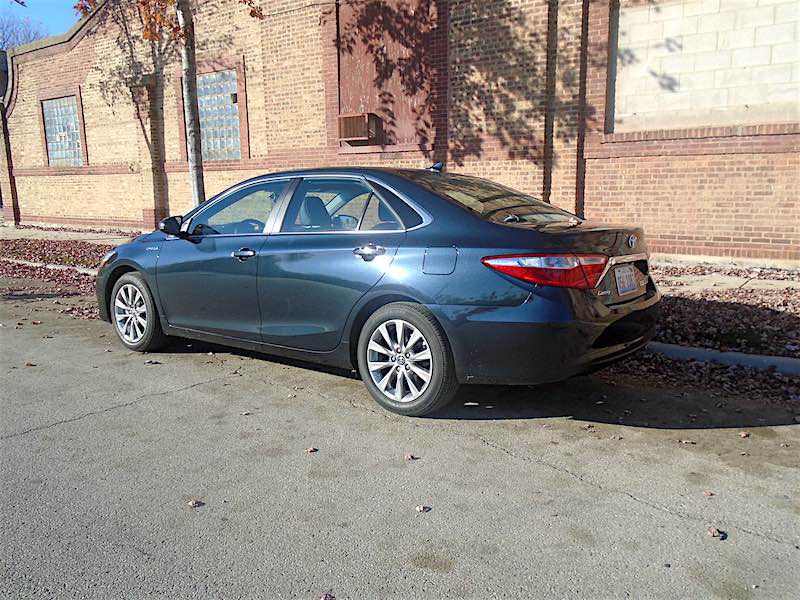
Photo by Cherise LaPine
Final Thoughts
The 2017 Camry Hybrid XLE reminds us very much of the 2017 Avalon Hybrid we drove a few months ago; we like the Camry a little more, if for no other reason than that its shorter wheelbase makes it easier to get the car in and out of our garage.
Toyota should be commended for providing such a consistent experience across the board, for providing a good quality hybrid midsize sedan to customers who don’t need, don’t want, or can’t afford the good quality hybrid large sedan that costs $10,000 more. Once you’re settled into a Toyota hybrid sedan, the driving experience is easy no matter what.
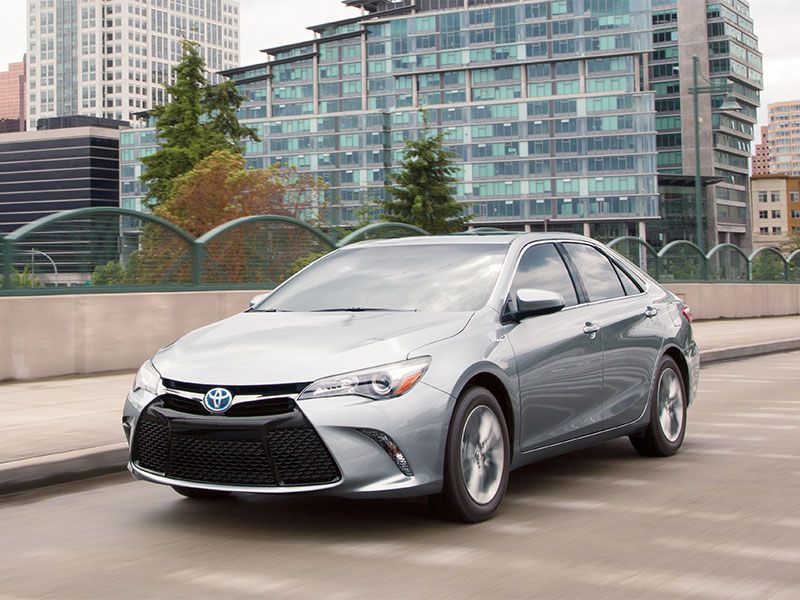
Photo by Toyota